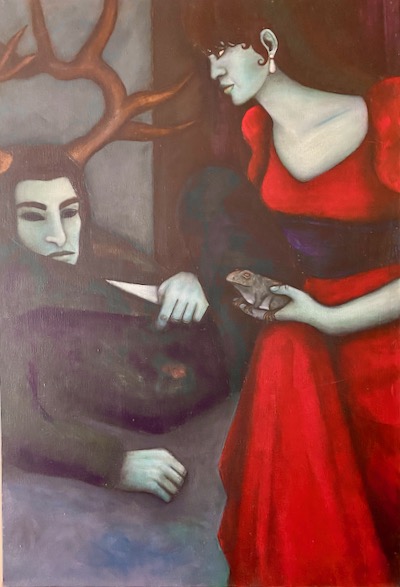
The American composer John Adams recently complained during a stay-at-home streaming interview from his composing shack on California’s Lost Coast that Baroque composers had it easy. Their compositions had to conform to about four patterns. But for a modern composer every single piece has to be an original invention. It is daunting, intellectually and emotionally. I’ve noticed this in my own search for new voices in writing, whether my own or those of others.
I’ve been an enthusiast in the past, from the crystalline inward revelations of Goethe in translation to the angry unreliable narrators of 90s transgressive fiction. I reveled in Nabokov’s multilingual estrangement and in Pynchon’s anachronistic dialect in Mason & Dixon. In essays there are the hollowed-out abstractions that form an evocative background in writing about art and architecture, the verbose polysyllabic scrums of political writers at the fringes of liberalism and conservatism who are trying to trace out a living intellectual history, and even the conceptual ambiguity of Continental Philosophy that seems to purposefully undermine its own analytical efforts at clarification.
Martin Amis, in his collection of essays, The Rub of Time, has one central message: don’t do cliché. His second message is don’t write memoirs because they are just crude weapons for attacking your historical enemies, from family to critics. Yet there is a feeling, in retrospect, that the reverse-time narration of Time’s Arrow or the end-reveal of London Fields are a bit gimmicky. The writing is more accessible than a Pynchon, but the mechanics are more akin to short stories from 60s sci-fi, just labored at with greater literary travail.
So, yes, I’ve been an enthusiast in the past but am a critic now. From The Iowa Review to hip-hop music reviews, our unfolding English seems to be almost cornered. Every word that was hidden in obscure, fat volumes on library shelves is now percolating around the internet for instant and short-lived consumption. The angles and the translational variants are laid bare by scholarship and analysis that previously hid behind accessibility barriers of graduate schools. There was too little before, but now there is everything. All the hermeneutics and obscurity can be traced through Wikipedia revealing nothing more than scholarly feuds and periodic trends. We must recall, after all, that some Tacitus was lost to us until the 15th century. It is worth noting that Thomas Carlyle may have been Ragnar Redbeard. It is a must to reflect on how Las Sergas de Esplandián influenced New World explorers.
Crawling through literary history and storytelling mechanics is a dry affair that also releases us from impotent wonder. The rub has revealed new flesh, at least as robust as that of the dead and dying artists and scholars, and inoculated against revisiting those brilliances. For that would be a dreadful cliché, or at least a failure to sufficiently transmogrify the pastiche of influences that lurk, dim and dumb, in the thickets of ideas.
Related: I hate southwest art pretty resoundingly. The subject matter is almost completely decorative, designed to match one’s couch or employing some non-understood mystical concept like Kokopelli as a semiotic signature for a lost and unreachable indigenous attachment to the land. And laughably twee, more often than not. Then, also, I hate modern abstraction and expressionism. It is done, finished. The notion that process lays bare the historical limitations and strictures of visual art was played-out by 1965. Now it is completely decorative, designed to match a swingeing modernism and pallid, low furniture. The language used to describe it is a curious elixir: “evokes memory,” “unveils form,” “reconsiders the idea of subject.” I’m not sure what to make of that; it’s as abstract as the work. So what could we do when my wife and I set out to enhance our house with a few new works? Create them ourselves, obviously, when we can’t find fitting acquisitions. She with her painting degree and me with bold suspicions about novelty and cliché.
Hence, we settled on a theme of animism and mythicism for our Sedona home. Everything wants you to question, from cast glass totems erupting with forms, to 5th century BCE stylized stag pendants from Scythian tribes. Arriving Tuesday are two new works of mine, 40″ x 40″ digital images printed on metal, that combine acquired assets and my own photography to create a bold addition to our current aesthetic. Note that I want to find the ideas and forms challenging every day. I will not tolerate twee cliché (or infestation! RIP Jerry Stiller). See if you are challenged, too.


Fixed name of painting.